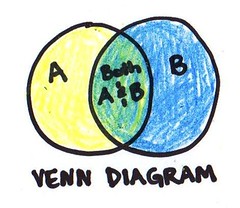The Gist:
- The issues are not the same.
- We’re not all in this together.
- Thinking it’s the same is wrong.
- Have different conversations.
The Whole Story:
 Tuesday, we ended Day 2 with an Elluminate session connecting the e-Personnel here in Eastern Cape with folks back in the States attending ISTE.
Tuesday, we ended Day 2 with an Elluminate session connecting the e-Personnel here in Eastern Cape with folks back in the States attending ISTE.
Thanks to Steve Hargadon for hooking us with the Elluminate connection. And thanks to Monika Hardy for joining in and talking about the work she’s doing with classrooms around the world.
It was quite the day.
Just before we were ready to reconvene following lunch, we lost connectivity. Here’s what’s funny, connectivity wasn’t an issue for the first few sessions. We were talking about backward design and working with adult learners and workshop design components. Computers were necessary, but not Internet.
After lunch, Google Docs was on the docket. (Geez, I’m witty.)
Then…it wasn’t.
As near as we can figure, some moderate winds in the area blew a telecom cable loose down the road. Telecommunications from here to Port Elizabeth were down.
There’s a dangerous trap to being here. Similarities can seduce. In an attempt to connect to the environment, to seem a part of rather than apart from, my mind went to “We have so much in common.”
That is the visible.
The invisible is not the same.
During the Elluminate session, a guest said, “I have a feeling we’re not so different.”
We may not be, but our situations are.
Picture a training for all the district technology coordinators for your state. Now, picture the Internet going down due to moderate winds.
What’s the reaction?
Would they sit as though nothing had happened?
We’re talking district-level folks as well as the heads of technology integration for the state.
My guess would be a series of hardy “harumphs.”
Here, there was no surprise.
Not the same.
What if your state was pushing to get every school connected to the Internet? What if several districts said no because they didn’t have electricity and then argued further that they didn’t want to get a generator to power connectivity because they knew the reliability of the generator would likely play havoc with or destroy the equipment if they had it?
Is that happening where you are?
This is me out on a limb saying, likely no.
What’s more, the local press would probably be on the story in hours.
Not the same.
What if the telecom provider your district contracted with honored the legally-required 50 percent e-rate for connectivity, but treated your school as a third-class consumer, arguing that the American satellite they contracted with to get their connectivity didn’t give them a 50 percent reduction for their account? And, no one did anything.
Again, the press, the parents, the district, all stakeholders would be on the line looking for answers.
Here, scenarios 1 and 2 above are such a part of life that snubbery by an international corporation seems par for the course.
Not the same.
I’ve more time to think on this over the next few weeks.
For those of you at ISTE this week, look at your programs. Where are the sessions about building connectivity across the world?
Where are the conversations about the importance of everyone’s voice?
Are we doing so greatly if we’re leaving so many behind?
Does having a “connected” classroom in North America matter when only 25.6 percent of the world’s population has access to the Internet?
When we talk of having our students collaborate with students around the world, do we celebrate the success AND tell the story of the road their partner countries had to walk to find access?
If information is currency and the haves and the have nots are finding themselves more and more separated, we’re fooling ourselves if we think it won’t lead to great troubles down the road.
What are you doing?